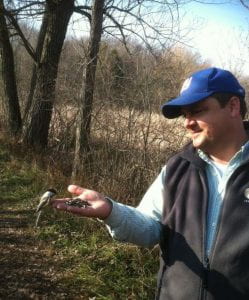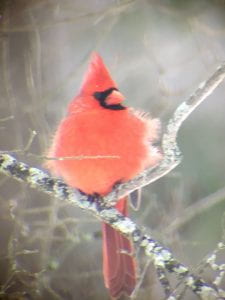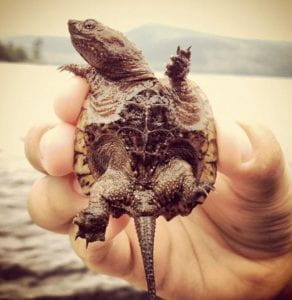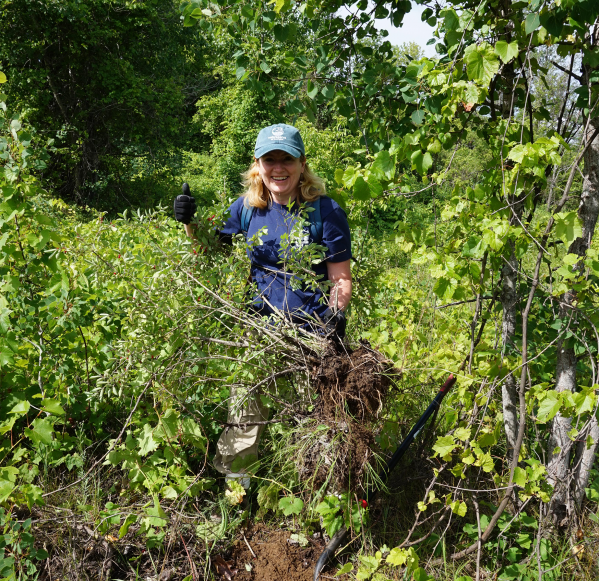Master Naturalist: Dick Waite
Master Naturalist ’20 – 31 volunteer hours , 38 training hours!
 Favorite animals: bald eagle, chickadee, black bear, river otter
Favorite animals: bald eagle, chickadee, black bear, river otter
Favorite plants: hemlock, milkweed, black-eyed susan
Favorite natural place: Piesco Lake in the Adirondacks
Dick is a licensed landscape architect from Livingston County, NY. He joined the Master Naturalist program last year because he loves the natural world and being outdoors, and wanted to learn more about nature and volunteer in a focused way. He is also passionate about environmental conservation, and is not only an Accredited Professional for both LEED (Leadership in Energy and Environmental Design) and SITES (Sustainable Sites Initiative), but also sits on the US Green Building Council’s Sustainable Sites Technical Advisory Group.
Outside of his professional environmental work, Dick volunteers often with the NYS Hemlock Initiative monitoring for Hemlock Woolly Adelgid at sites in Naples and North Rose, NY. He was first drawn to the program because he owns property in the Adirondacks with a stand of mature Hemlock trees, and he now monitors those for HWA as well.
 Dick also volunteers for the Cornell Lab of Ornithology’s Project Feeder Watch, counting birds at his feeders over the 21-week Feeder Watch season. So far, he’s observed 20 bird species at his feeders, and has enjoyed watching his backyard become a destination for birds and other wildlife.
Dick also volunteers for the Cornell Lab of Ornithology’s Project Feeder Watch, counting birds at his feeders over the 21-week Feeder Watch season. So far, he’s observed 20 bird species at his feeders, and has enjoyed watching his backyard become a destination for birds and other wildlife.
 To find training and volunteer opportunities, Dick signed up to receive newsletters from the various land trusts, soil and water conservation districts, lake associations, and conservation groups in his area. This provided him with plenty of opportunities to choose from, allowing him to pick events that interest him most. Dick also enjoys engaging his wife and three daughters to participate in field work with him, sharing learning experiences and enjoying time in the outdoors together.
To find training and volunteer opportunities, Dick signed up to receive newsletters from the various land trusts, soil and water conservation districts, lake associations, and conservation groups in his area. This provided him with plenty of opportunities to choose from, allowing him to pick events that interest him most. Dick also enjoys engaging his wife and three daughters to participate in field work with him, sharing learning experiences and enjoying time in the outdoors together.
Congratulations again to Dick, and thank you for all your contributions to citizen science in New York State!













